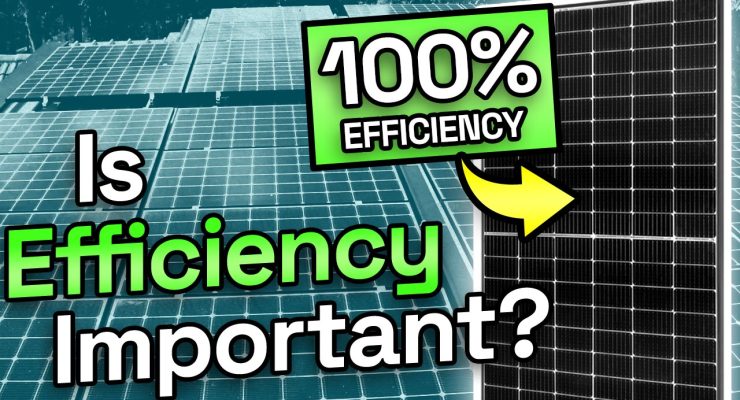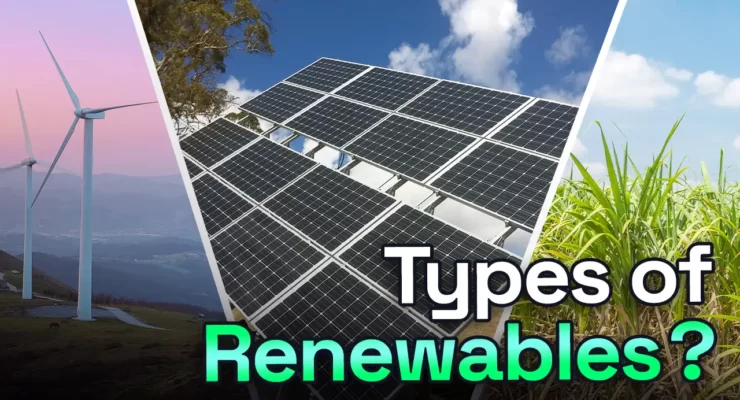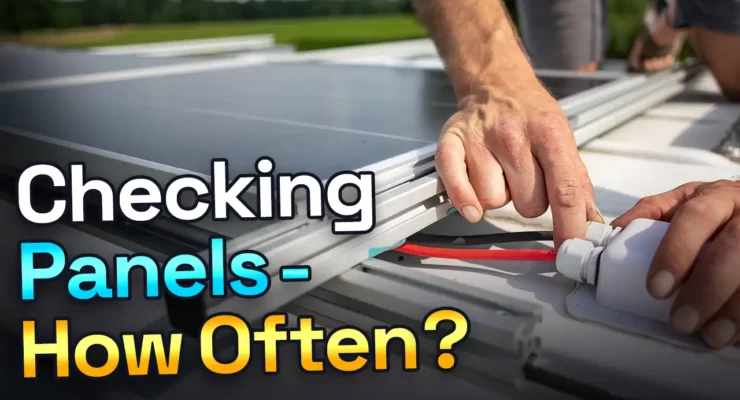
Fast read
When trying to produce their own renewable energy, homeowners should consider high-efficiency solar panels as a wise investment. These panels are a fantastic option for people with limited roof space because they may produce more electricity using the same space.
In the long run, they can help save money on maintenance and replacement costs because they are more durable and have a longer lifespan. In addition, homeowners can lessen their dependency on fossil fuels and aid in the fight against climate change by producing their own electricity.
Although it may cost more upfront, these systems have the potential to save a lot of money over time on electricity costs and reduce carbon emissions.
What is the efficiency of solar panels?
Imagine the future; with climate change a real and present threat, the roof space of your home will be an important asset to combat climate change. The reason is that residents will have solar panels on their roofs to charge the battery system for their home electricity consumption and their electric cars.
Even though some political leaders have been slow to act, possibly because of self-interest in influential industries like coal and mining, the day is rapidly approaching when politicians will be forced to act.
One of the quickest and easiest ways for them to act on climate change will be to move from fossil-fuelled cars to electric cars over the next decade. But there is no point in driving an electric vehicle and then plugging it in to receive coal-fired electricity for the battery. These electric cars will only make a CO2 difference if they gain power through renewable energy. This is where efficient solar panels will come into action.
The offer of EV models in Australia is increasing
Therefore, it is not surprising that many car manufacturers now have an ever-growing suite of electric cars in their model line-up.
Most people would need a range of around 80 -100 km per day for their electric car. Using the current electric car as an example, they would need a minimum of 12 to 15kW/h of electricity to charge their battery to travel this distance.
Most homes, especially the ones with two cars, would need to generate at least 20 -30 kW/h for the car charging, and they would also aim to get a further 20-25 kW/h to power their home.
How can we make your home a true renewable powerhouse?
So let me explain the ideal scenario to make your home a renewable energy powerhouse – if cost is no barrier.
1. One needs a large solar power system as the basis for a sufficient generation.
2. It’s advised to install a home battery and use the renewable electricity generated during the day and night.
3. Finally, one needs one or two car chargers connected to the solar system and the battery to charge your EV with renewable energy.
If we now add the minimum energy requirements with a comfortable buffer for cloudy days etc. We would need a solar energy system that can generate at least 50 kW/h per day for a single-car household or 65 kW/h for a 2-car household.

To create 65 kW/h for most of the months each year, for example, in Sydney, we would need a 20 kW solar system and a 26 kW/h battery bank. The current solar panels in the 400-watt range would mean one needs 50 solar panels with an average footprint of 2 square meters, totalling around 100 square meters of roof space to fit such a system.
Of course, the more efficient the solar panel, the less roof area one would need, but in any case, a 100 square meter roof space means the house must be significant. Alternatively, one could put a ground-mounted array or solar carport next to the house, as long as one has the land available.
Choosing a highly efficient solar panel will save valuable roof space
So by selecting the highest energy output solar panel today, you will preserve valuable roof space for future expansion. It’s a bit like buying a more expensive upgradable computer rather than a cheaper one that becomes obsolete the next time Windows does an update.
But if we invested in such a large solar system, a battery bank, and EV charging, would this make financial sense?
The costs versus benefits
On the cost side, a quality 20 kW solar system, a 26 kWh battery bank, and two car charging units will cost us at least $50,000 or even a bit more (in 2022 pricing). If we allow a lifespan of 10 years for the batteries, the system has to return at least $5000 annually in savings to make financial sense over a decade.
If we allow the two cars an annual driving of 30,000 km and say all power has been generated by the home solar system based in Sydney or Melbourne, for example, we will save around $6000 per annum in petrol.
Regarding the electricity bill, we will have a further saving of at least $2500 per annum. So the total savings will be around $8500 per annum or $85,000 over ten years, for an initial investment of around $50,000 plus some maintenance costs over the decade. Maintenance costs refer to getting a routine clean and inspection by a solar professional, not using a dodgy solar module cleaner.
By year 11, they will have to invest in new batteries again, but the solar system should still be good for another decade.

Should I get the most efficient solar panels?
So, in summary, because your roof space is most likely never big enough for all your electricity needs – get the most efficient solar panel to save valuable roof space or to create the most extensive possible solar system on your roof.
Financially you will make some profit over ten years. Still, you will also have to make a significant initial investment to power your home and have your family driving with 100% renewable energy.
To make this proposal feasible for most families, the cost of batteries must be reduced, and the efficiency of solar panels have to increase a little more- for us to install the appropriate 10 to 20 kW system and battery combo on any average home.
We are close – but the technology hopefully jumps even further ahead, making this proposed solution possible for all homeowners.


